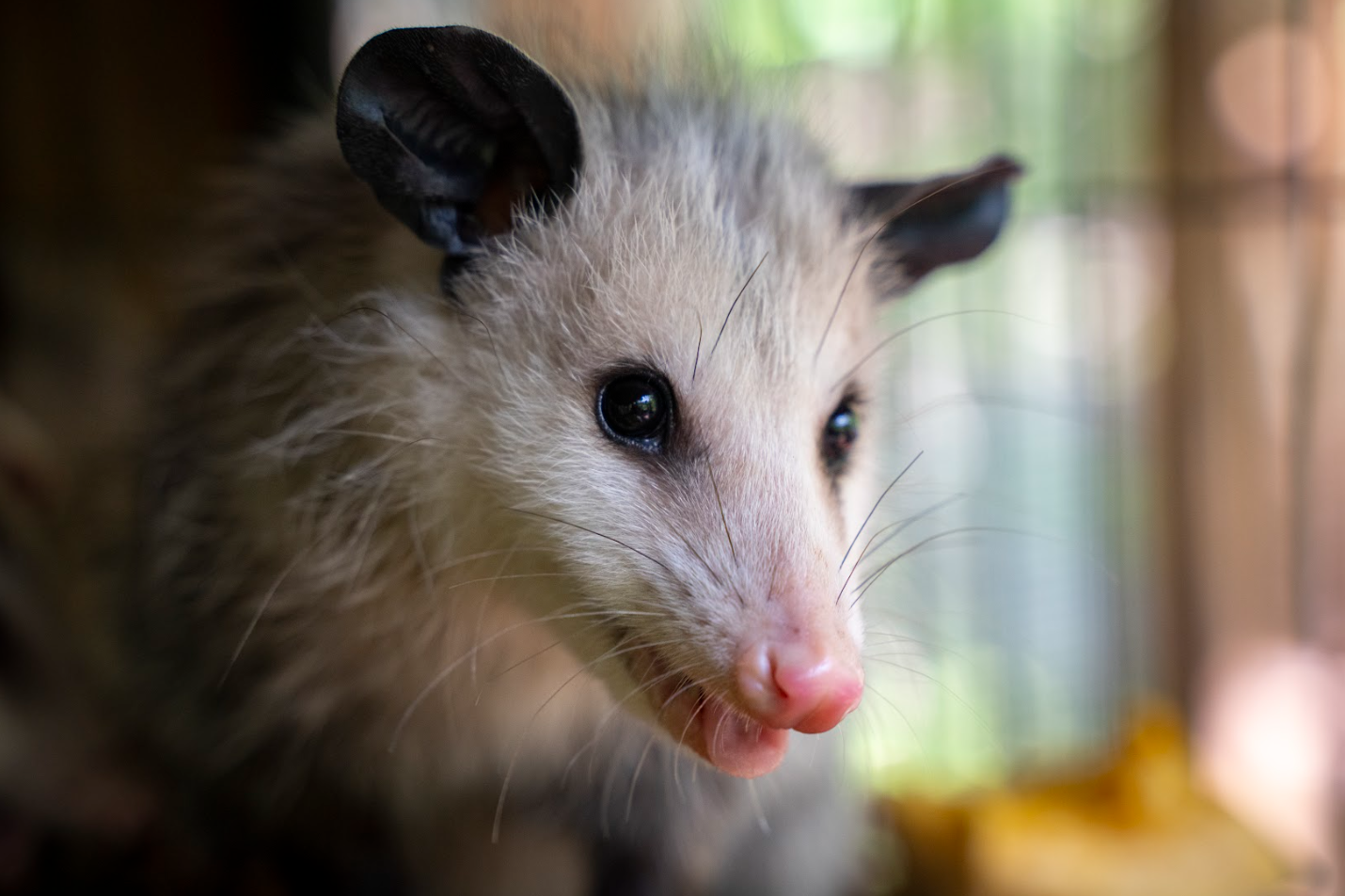
Virginia opossum
Didelphis virginiana
Nature's Misunderstood Marvels
The Virginia opossum is a marsupial native to North and Central America. With its distinctive long snout, hairless prehensile tail, and grayish fur, the Virginia opossum is known for its adaptability to various environments, including forests, urban areas, and farmlands. It's the only marsupial found in the United States and Canada, and its unique reproductive system involves giving birth to underdeveloped young, which then continue to develop in the mother's pouch. Opossums are primarily nocturnal omnivores, feeding on a wide range of foods such as fruits, insects, small mammals, and carrion. They play an essential role in ecosystems by helping control insect populations and serving as scavengers.
Ecosystem services
Opossums play several important roles in the environment:
1. Controlling insect populations: Opossums are voracious insectivores, consuming a wide variety of insects, including beetles, ticks, and cockroaches. By feeding on these pests, they help regulate insect populations, reducing the need for chemical pesticides.
2. Cleaning up carrion: Opossums are scavengers, feeding on carrion and decaying organic matter. By consuming dead animals, they help prevent the spread of disease and recycle nutrients back into the ecosystem.
3. Seed dispersal: Opossums inadvertently aid in seed dispersal by consuming fruits and berries and then dispersing the seeds through their feces. This helps to promote plant diversity and regeneration in ecosystems.
4. Preventing tick-borne diseases: Opossums are highly effective at grooming themselves, including removing ticks and other ectoparasites from their fur. Research has shown that opossums can significantly reduce the number of ticks in an area, thereby lowering the risk of tick-borne diseases such as Lyme disease.
Overall, opossums play a vital role in maintaining ecosystem health and balance through their feeding habits and behaviors.
Opossum misconceptions
There are several misconceptions about Virginia opossums that are worth addressing:
1. They are aggressive: While opossums may hiss, growl, or even play dead when threatened, they are typically docile and non-aggressive creatures. Their defensive behaviors are primarily meant to bluff predators and avoid confrontation.
2. They carry rabies: Opossums have a lower body temperature than most mammals, making them less susceptible to rabies. In fact, they are rarely carriers of the virus due to their unique physiological characteristics.
3. They are dirty and disease-ridden: Opossums are actually quite clean animals. They groom themselves regularly, similar to cats, which helps keep their fur free of parasites and disease-causing agents.
4. They are pests: While opossums may occasionally raid trash cans or scavenge for food in urban areas, they are not destructive pests like rats or raccoons. In fact, they play a beneficial role in controlling insect populations and cleaning up carrion.
5. They are rodents: Despite their appearance, opossums are not rodents. They belong to the order Didelphimorphia, which makes them marsupials, related to kangaroos and koalas. Their unique biology and reproductive system set them apart from rodents.
Opossum release into the wild
Rehabilitating opossums plays a vital role in environmental conservation by contributing to the overall health and balance of ecosystems. Opossums are integral members of food chains, controlling insect populations, scavenging carrion, and aiding in seed dispersal. By rehabilitating injured, sick, or orphaned opossums and releasing them back into their natural habitats, we can ensure the continuation of these ecological functions. Additionally, opossums serve as indicators of ecosystem health, and their presence in the environment reflects the overall well-being of ecosystems. Rehabilitating opossums not only helps individual animals but also supports the resilience and functioning of ecosystems, ultimately benefiting biodiversity and environmental sustainability.




